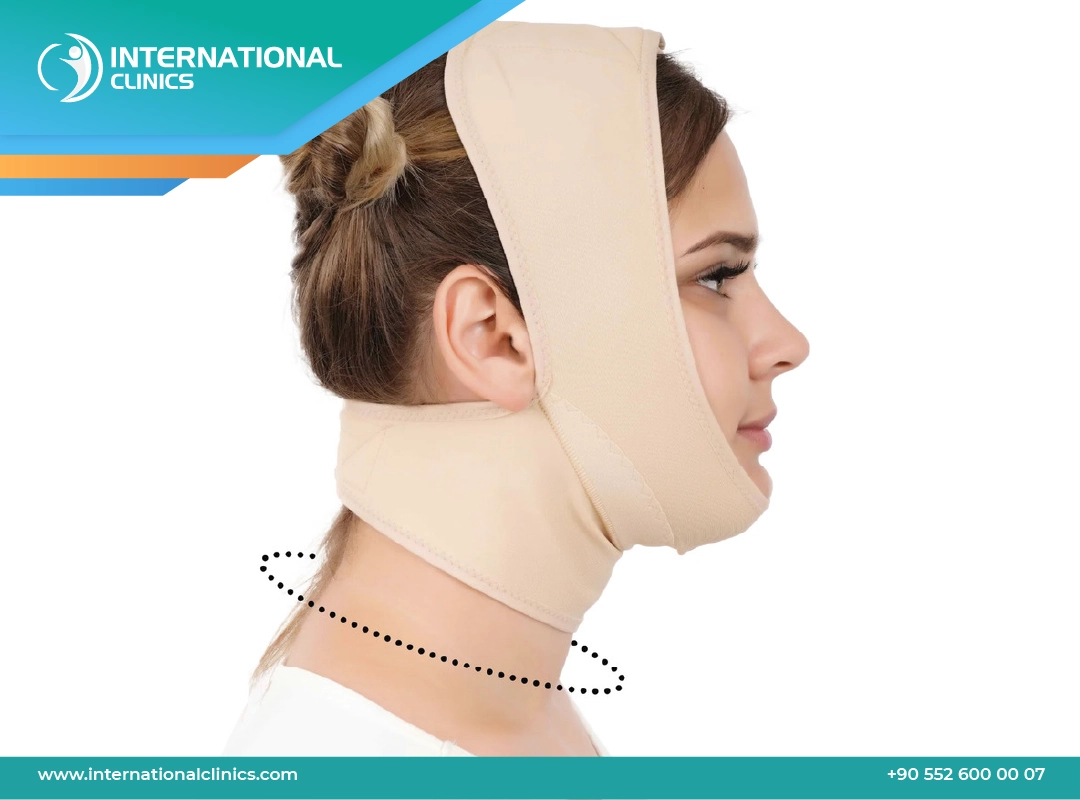After a facelift, our nurses often provide patients with a cotton-lined chin strap, and they demonstrate how to wear this properly. For the first two weeks following surgery, you must wear this strap all the time, except when eating and showering the incisions.
If you were sent home with a chin strap, you must wear it to reduce swelling. Although it might feel a bit annoying for a few days, you can be confident that it won get in the way of your breathing or swallowing.
Patients who seek the best possible outcome for their recovery process should use a face compression wrap or chin strap that fits properly. Since patients’ demands are different, it is important to discuss the kind of chin strap with their surgeon.
Purpose of a Chin Strap After Facelift
Chin straps can be quite helpful in maximizing comfort during the healing phase following a facelift or neck lift.
These straps and other facial compression clothing offer the ideal amount of compression to support the surgery site and recovery.
Indeed, they can help patients after procedures such as chin implants, cheekbone surgery, ear surgery, maxillofacial surgery, and other cosmetic treatments.
Chin straps with compression are often suggested for better healing and resolving edema by applying consistent pressure to the tissues.
A study described chin straps as a good option to close dead space and help resolve seroma.
Some of these straps can be adjusted differently as you heal, providing the right amount of pressure without being uncomfortable.
Full face and neck support straps provide comprehensive covering, which is necessary, at least in some cases, for long-term neck lift rehabilitation.
Related Article:
How Much is a Facelift: The Full Guide for Facelift Cost
Reduce Swelling After Face Lift
Customization of the Chin Strap
To speed up healing and recovery after a facelift, the perfect chin strap should have a few key components and customization options.
Of course, a cosmetic surgeon or face surgery specialist should propose the best chin strap.
After all, its primary function should be to support the surgical site and facilitate recovery by offering gentle compression.
An excellent chin strap should have movable straps or fasteners to provide a personalized fit and maximum comfort for every patient.
This guarantees that it has been created to meet the special requirements of people recuperating following surgery.
In addition, a good chin strap should apply little pressure to the treated area. A satisfactory outcome depends on promoting appropriate blood circulation and reducing edema by mild compression.
Additionally, it should be robust enough to endure regular use while doing routine tasks like sleeping or light exercise, avoiding demanding activities that might slow down the healing process.
Related Article: Sleep After Face Lift
How Tight Should the Chin Strap Be After Facelift?
Following surgery, chin straps can reduce discomfort and shield the skin from potential issues.
If they fit properly, they should not be excessively tight to prevent skin irritation and harm.
Sensitive skin benefits from chin strap padding and wearing a soft material underneath can also be beneficial.
The chin strap should be adjusted based on your needs. Loosen it for eating, then pull it back tight.
Make sure it stays in place while you sleep to prevent pain. Select a chin strap for social events based on your dress or skin tone.
Related Article: Massage After Face Lift
How Long to Wear the Chin Strap After Facelift?
The length of time a patient must wear a chin strap depends on how quickly their body heals and the surgeons instructions.
You may be told to use the chin strap less often after the first week. You might not even need to wear it all day, even though evenings and specific times of the day still call for its use.
Your surgeon should be the only one to recommend wearing time, which should usually coincide with regular follow-up appointments.
After the first month, using the chin strap exclusively at night becomes very common and recommended. This ongoing support may be advised for a few more weeks or if your healthcare provider feels it is required, especially when you sleep.
Related Article: Face Lift in Turkey

 EN
EN